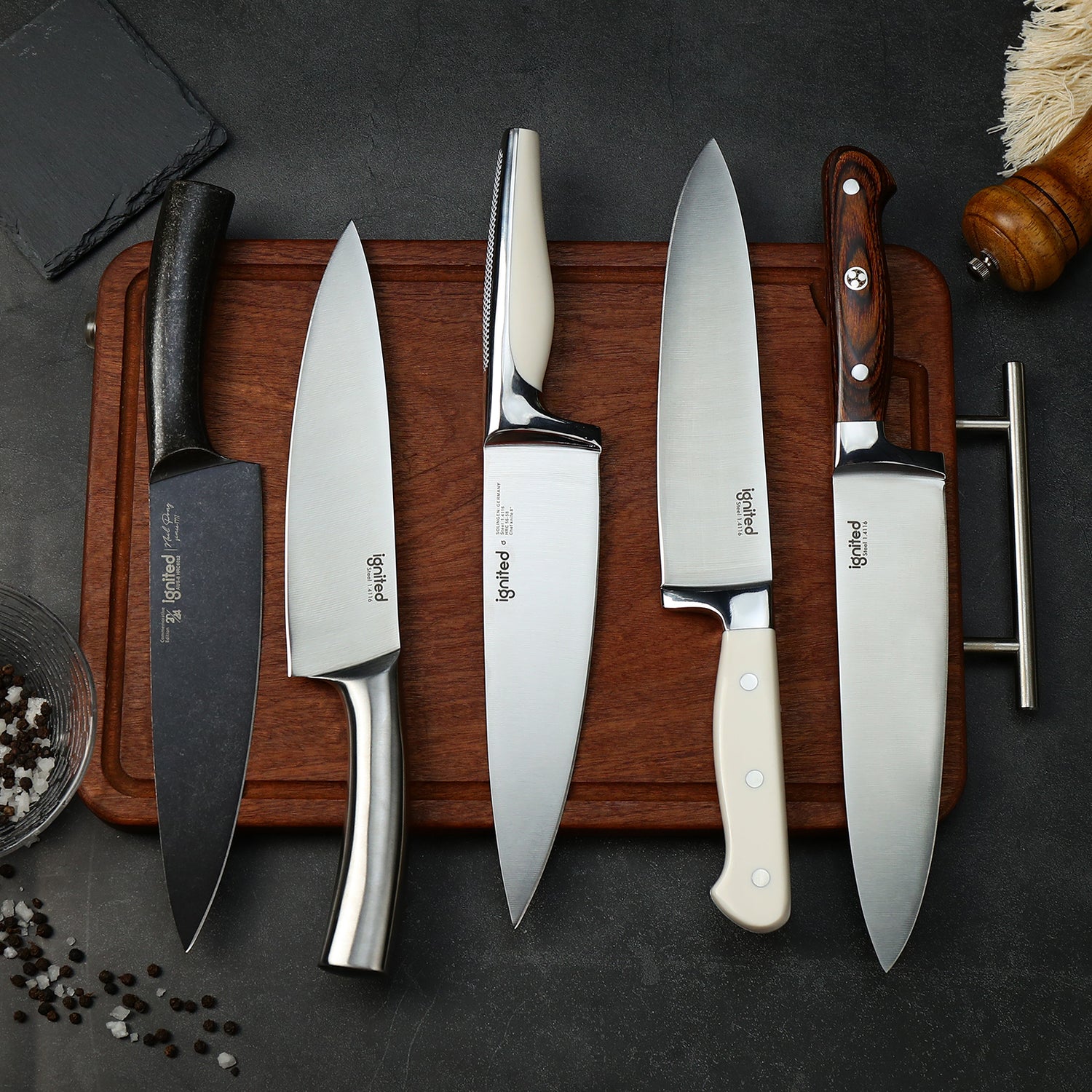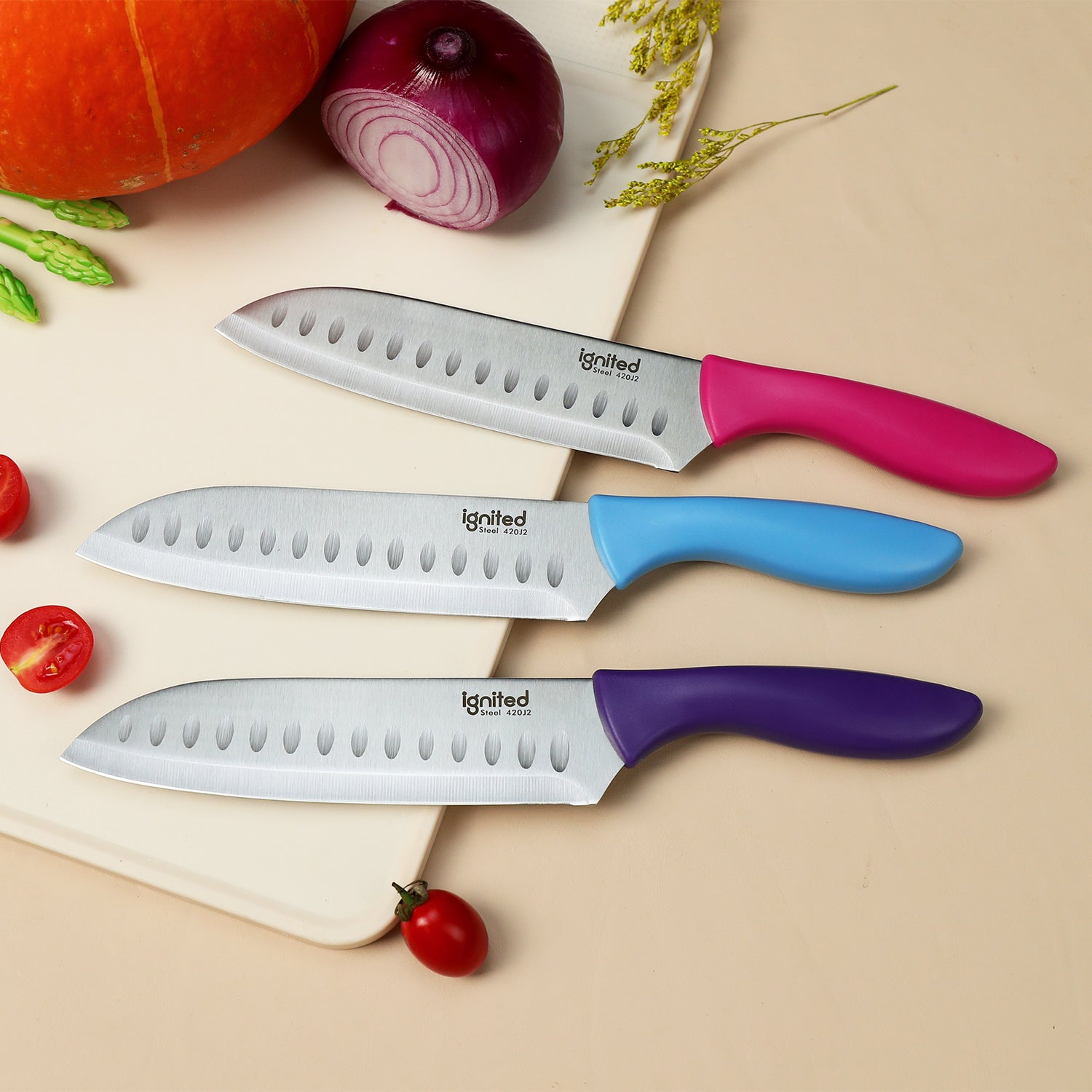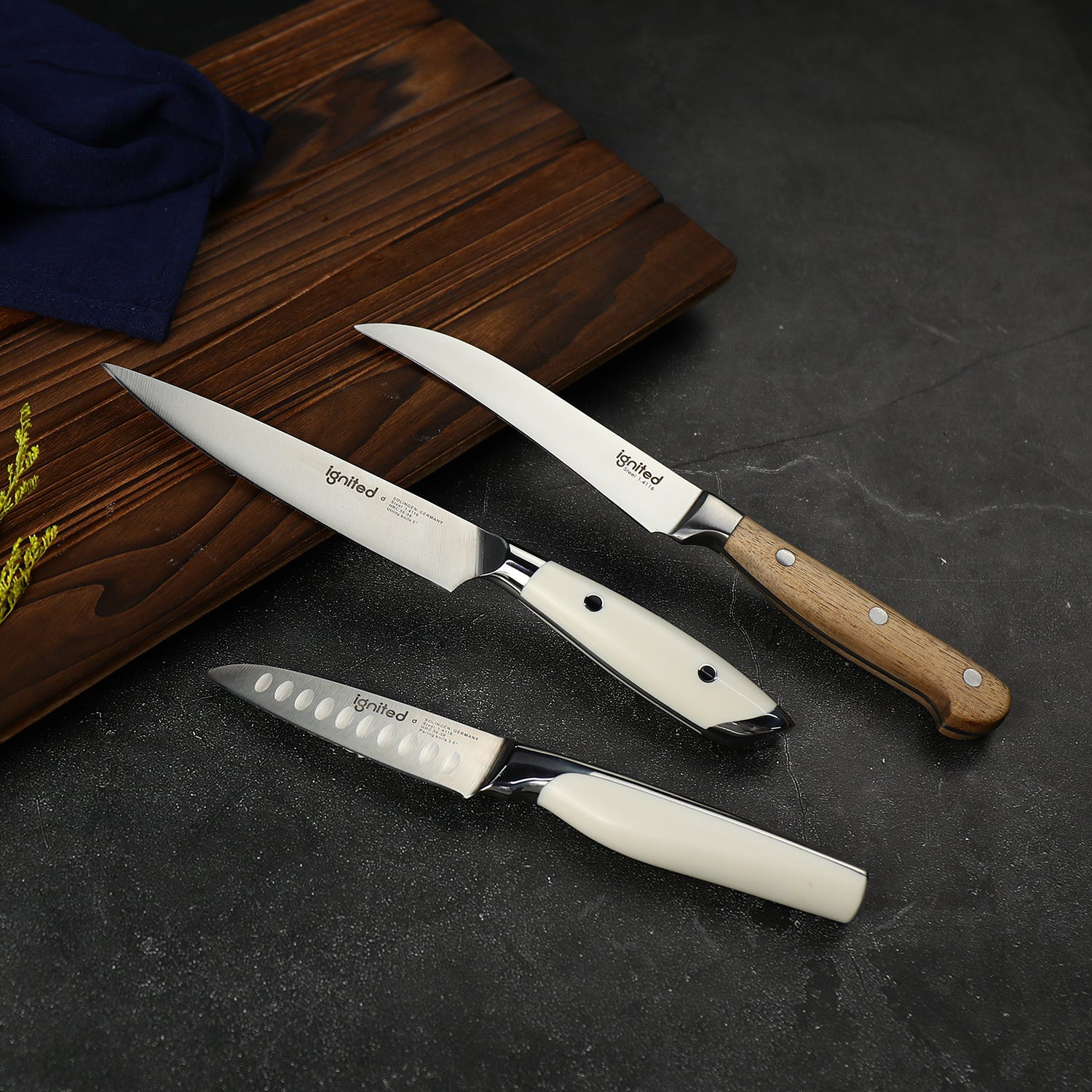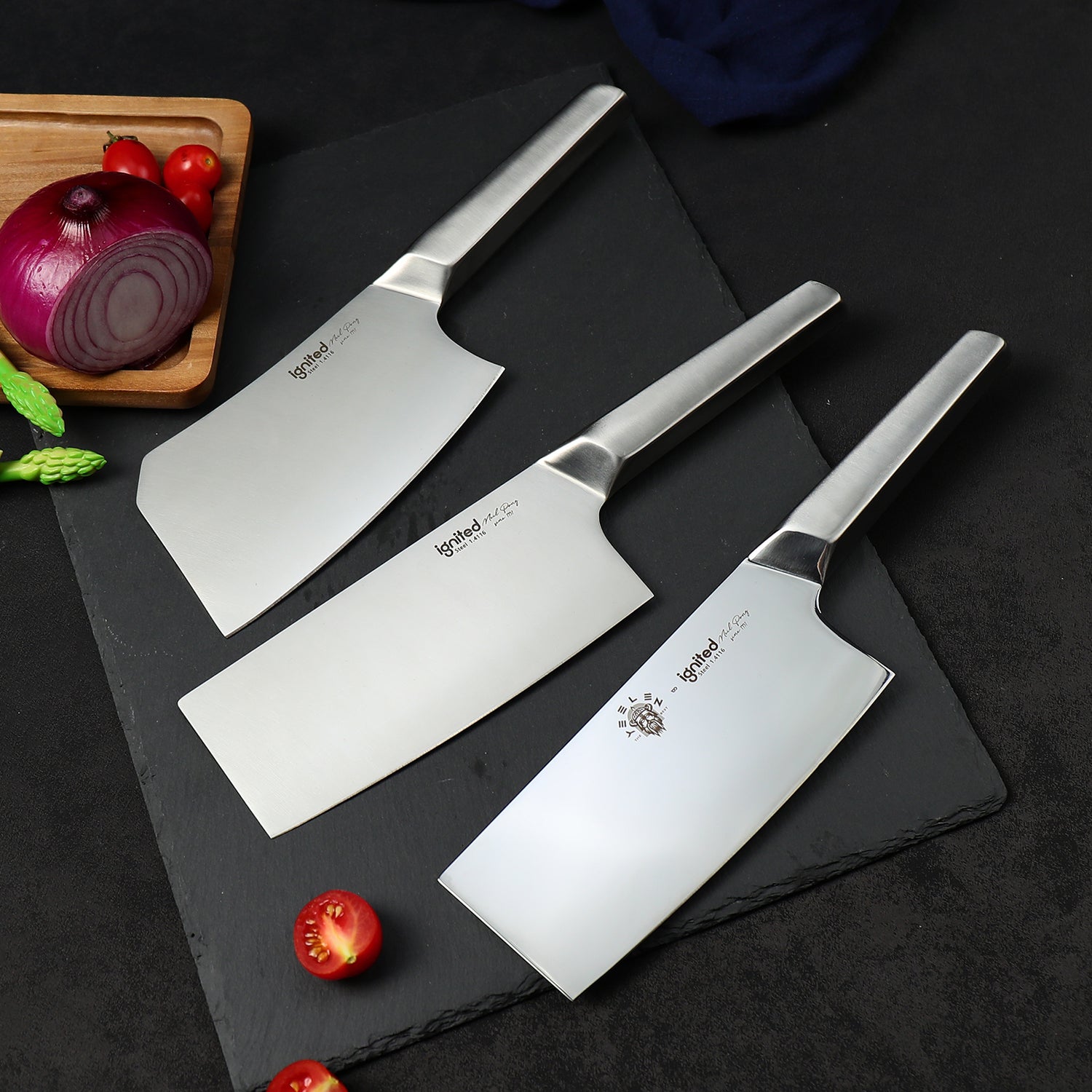A cheese knife is a specialized cutting tool designed to slice, spread, or serve different types of cheese without sticking or crumbling. If you love cheese boards or hosting wine and cheese nights, understanding cheese knives will elevate your experience. In this guide, Ignited Cutlery explains what a cheese knife is, its main uses, the different types, and how to choose and care for one.

Content Menu
- What Is a Cheese Knife?
- Why Use a Cheese Knife?
- Types of Cheese Knives
- How to Choose a Cheese Knife
- Caring for Your Cheese Knives
- Conclusion
- FAQs
What Is a Cheese Knife?
A cheese knife is specifically designed to handle the unique textures of cheeses — from soft and creamy brie to hard aged parmesan. Unlike general kitchen knives, many cheese knives have holes in the blade to prevent cheese from sticking, and some have pronged tips for easy serving.
Why Use a Cheese Knife?
Using a cheese knife ensures you get clean cuts without crushing soft cheeses or crumbling hard ones. The specialized design helps maintain the cheese’s texture and presentation, making your cheese board both delicious and visually appealing. For soft cheeses, non-stick surfaces and thin blades prevent sticking, while sturdy blades help slice through hard rinds with minimal effort.
Types of Cheese Knives
Different cheeses call for different knives. Here are some common types:
- Soft Cheese Knife: Often features holes in the blade and a thin edge to prevent soft cheeses like brie or camembert from sticking.
- Hard Cheese Knife: Has a strong, sharp blade for cutting firm cheeses like cheddar or gouda.
- Parmesan Knife: A small, short knife with a pointed blade for breaking apart hard, aged cheeses.
- Cheese Spreader: Wide, blunt blade for spreading creamy cheeses like goat cheese or cream cheese on crackers or bread.
- Pronged Cheese Knife: A multipurpose knife with a forked tip for picking up and serving cheese slices.
How to Choose a Cheese Knife
When choosing a cheese knife, consider:
- Cheese Type: Match your knife to the cheese — softer cheeses need non-stick designs; hard cheeses need sturdy blades.
- Material: High-quality stainless steel resists corrosion and maintains sharpness.
- Handle Comfort: Look for a handle that feels balanced and comfortable during slicing and serving.
- Presentation: Beautiful cheese knives can enhance your table setting and add elegance to your cheese boards.
Caring for Your Cheese Knives
- Hand wash your cheese knives promptly to prevent residue build-up.
- Dry them thoroughly to avoid rust or corrosion.
- Sharpen blades as needed, especially for hard cheese knives.
- Store in a knife block or protective cover to keep edges sharp and safe.
Conclusion
Whether you’re a casual cheese lover or a serious host, the right cheese knife makes all the difference. With the proper knife, you’ll get perfect slices, beautiful presentation, and a better tasting experience. Explore premium cheese knives at Ignited Cutlery to complement your next gathering.
FAQs
Q: Can I use a regular kitchen knife for cheese?
A: You can, but you may struggle with soft cheeses sticking or hard cheeses crumbling. A dedicated cheese knife solves these issues.
Q: Why do some cheese knives have holes?
A: The holes reduce surface contact, preventing soft cheeses from sticking to the blade.
Q: How should I clean my cheese knife?
A: Always hand wash and dry immediately to protect the blade and handle.
Q: Do I need a different knife for every cheese?
A: For the best experience, yes — but a multipurpose cheese knife with a pronged tip can handle a variety of cheeses for casual serving.





